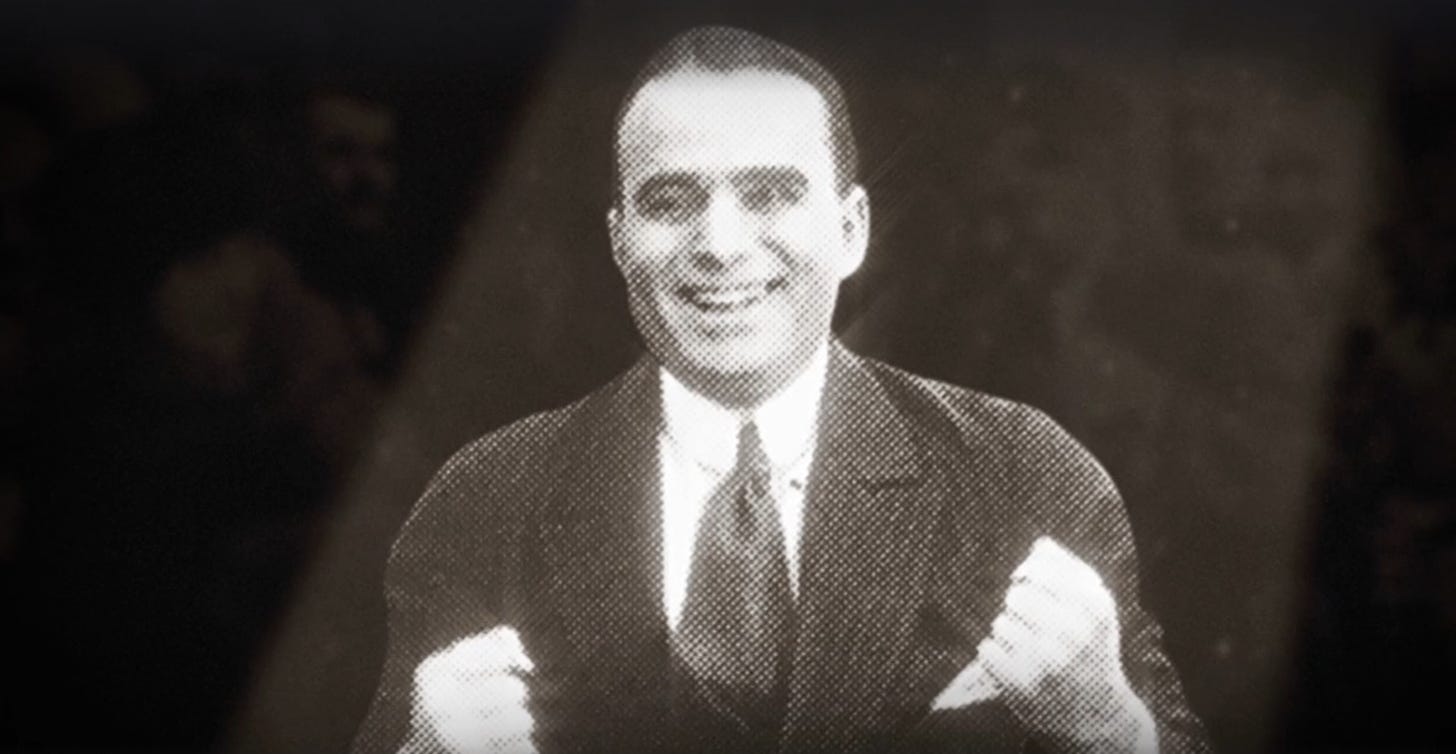I, Douglas Fairbanks (2018)
It’s easy to underestimate, especially nowadays, how important Douglas Fairbanks really is, and I, Douglas Fairbanks attempts to bridge the gap between today and yesterday. While I give the filmmakers props for creativity, some key details get a wee bit lost in the shuffle.
What the film shows really, really well is how versatile Fairbanks was. In terms of stunts, Fairbanks could be sort of compared to Tom Cruise. As an actor, he could sort of be compared to Kenneth Branaugh or Chris Pratt.
I say “sort of” because so much of everything those actors do today Fairbanks created or at least set in motion. That slashy “Z” Zorro always makes in his films was the result of an on-set ad-lib by Fairbanks. Fred Astaire dancing on the ceiling in Royal Wedding was modeled in part after a scene from Fairbanks’s 1917 film, When the Clouds Roll By. Fairbanks invented storyboarding. When too many crew members would come back late from lunch, or come back drunk, or not come back, Fairbanks invented craft services. He invented studio tours when ticket sales started flagging.
Not only that, but Fairbanks helped found United Artists because a growing number of actors and other industry professionals were tired of being ordered around by executives who had no idea what made a good movie.
However, his influence went way beyond what was seen on the screen. Fairbanks was the first president of the Academy of Motion Picture Arts and Sciences. He and wife Mary Pickford helped popularize Alfredo sauce. They also were the first to leave their handprints and footprints in the forecourt of Grauman’s Chinese Theater. It’s said that John Dillinger grew a mustache as a tribute to Fairbanks’s D’Artagnan.
(On a side note, my hometown of Auburn, California, has a personal connection to Fairbanks and Pickford. In 1932, Pickford purchased the bar from what was then the Union Saloon in Old Town as a present for Fairbanks and installed it at Pickfair. That saloon is known as Carpe Vino today.)
Anyway, I, Douglas Fairbanks is narrated in first person by way of adding some immediacy to Fairbanks’s life for today’s viewers and does a fine job of putting his story in context of current-day Hollywood. It moves succinctly and covers pretty much everything.
I liked the way the film went into detail about Fairbanks’s friendship with Charlie Chaplin—there’s some really great footage of Fairbanks and Chaplin playing off each other, with Fairbanks doing his acrobatics and Chaplin recreating everything Fairbanks did in his own comical way. The narration expresses regret that Chaplin and Fairbanks never made a movie together.
The narration, unfortunately, is where the film stumbles because the structure brings up a myriad of problems, especially when dealing with a subject who passed away in 1939. For one thing, Douglas Fairbanks wouldn’t have talked the way people talk nowadays, especially in a direct-address format. He wouldn’t have said, “Yeah,” in an interview because it would have been too informal and possibly uncouth.
There’s also the danger of editorializing or putting words in peoples’ mouths when narrating in first person, not to mention it dilutes authenticity. The filmmakers would have done better to use Fairbanks’s actual thoughts or what others said about him instead of sticking their own spin on things. There are already plenty of myths floating around about old Hollywood, especially the silent era, and as that time gets further into the past it’s better to bust or ignore myths, not create them.
Plus the first-person narration can be awkward, especially seeing as Fairbanks, is, well, dead. It strikes a funny note when a documentary’s subject talks about his or her own death because if they were really alive they obviously wouldn’t do that. The only time I’ve ever seen this done successfully is the second half of the Anne Frank House’s Video Diary series, as they imply Anne is in the afterlife talking about her experiences in Auschwitz and Bergen-Belsen. Even then, though, it’s a stretch.
I also wish the film could have talked more about Fairbanks’s early life. Sure, he was a great athlete and acrobat and so on, but how did he acquire those skills? What was his home life like? We see very little to no information about any of that, as if Fairbanks appeared on the scene fully formed.
And there were a few errors as well. When the film talks about Fairbanks’s wedding to Mary Pickford, the actress they show isn’t Mary Pickford but Bebe Daniels with Fairbanks in a still from Reaching For the Moon. It also erroneously said the five Warner brothers were from Pittsburg, which they were but they weren’t, as they only moved there to work with Carl Laemmle after living in Baltimore, Maryland and Youngstown, Ohio.
Small missteps aside, I, Douglas Fairbanks is an enjoyable and all too short hour spent with a legend who deserves much more credit than he gets.
I, Douglas Fairbanks is currently streaming on Tubi and Peacock. Not rated.
My grade: B+
Principal Cast: Peter Facinelli (narrator), Douglas Fairbanks (archival footage), Charlie Chaplin (archival footage), Mary Pickford (archival footage)
Directed and written by: Clara Kuperberg and Julia Kuperberg




